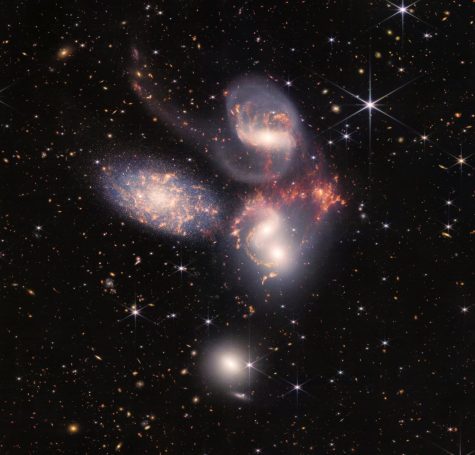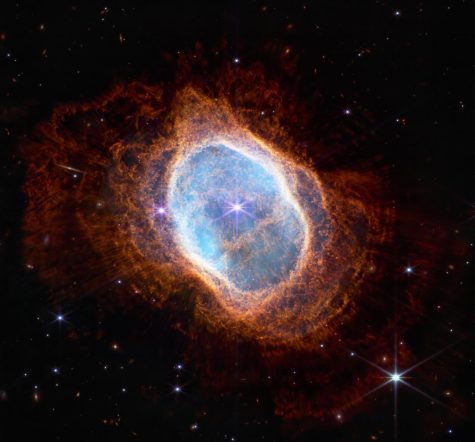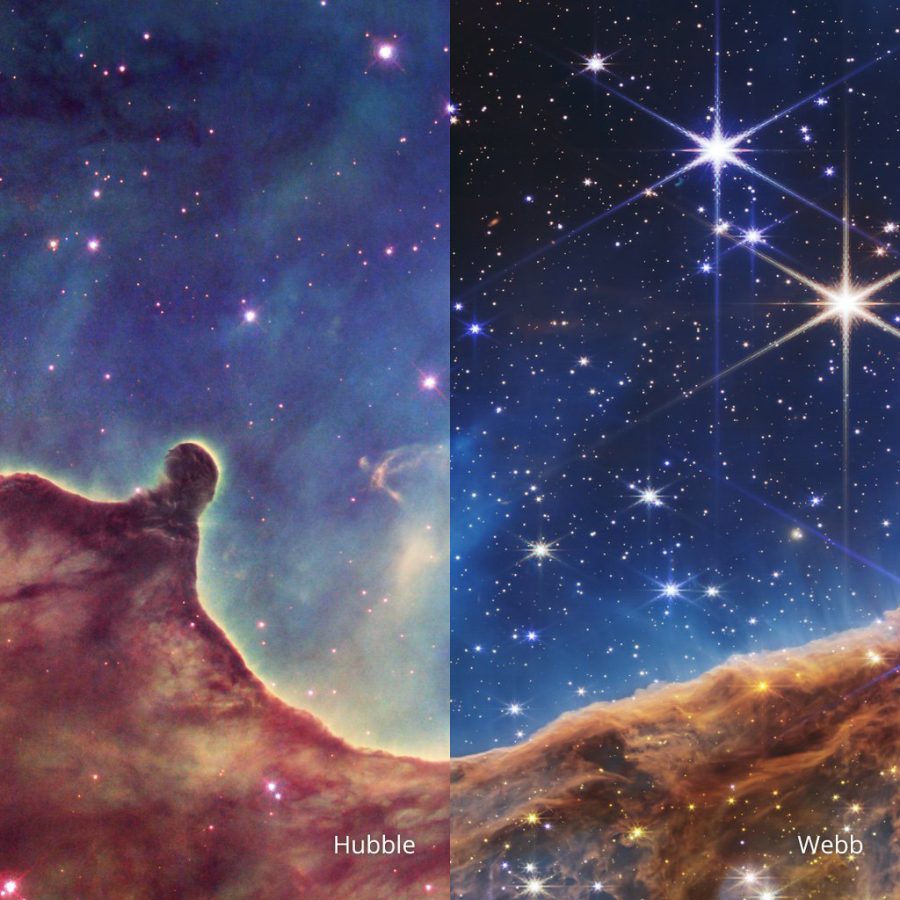Telescope sees space in hi-def
Comparison photo of the Carina Nebula between Hubble (left) and James Webb space telescopes showcasing difference in resolution between the two.
September 28, 2022
Astronomers have been able to see the universe in a way few could have ever imagined we would. Due to the new James Webb Space Telescope, commonly referred to as JWST or Webb, NASA has been able to treat the world to images of galaxies, stars and planets with groundbreaking clarity. The telescope’s primary goal is to, “search for the first galaxies or luminous objects formed after the Big Bang,” according to nasa.com.
Webb’s increased range and positioning will help astronomers understand how galaxies have evolved from the time of their formation until now as well as how early planetary systems came to be.
Chaz Hafey, astronomy and physics, and geology labs coordinator, said, “They have already taken some pictures that the Hubble has already taken, with the James Webb [now], and it looks so much clearer. It’s like going from old analog TV to 4K, or at least [high definition]. We’re going to see a lot more clarity.”
The telescope has already provided spectacular images of deep space. The Carina Nebula is a fascinating image that shows an area in space where stars are born. Due to Webb’s infrared capabilities, scientists can see past clouds of gas and dust that optical light telescopes cannot, so these young stars are visible with more clarity than before.
With the help of an Ariane 5 rocket, the JWST was launched Dec. 25, 2021, from French Guiana. The successful launch of Webb was an overwhelming relief as it had been met with delays caused by concerns it might malfunction while in space, mainly due to any one of the 344 points where mechanisms that allow it to unfold have no backup.
The telescope is so large scientists had to design it to be able to fold to ensure it could fit in the rocket that launched it into space. It took a grueling two weeks to complete the process of unfolding the telescope.

Once in space, it took roughly 30 days to travel to where it collects photos. From this position, also known as a Lagrange point, Webb is held in place by both the sun and Earth’s gravity, keeping the $10 billion telescope from drifting aimlessly throughout the cosmos.
James Webb’s specialized infrared detectors, and its strategic position orbiting the Lagrange point, will ensure it provides incredible images of deep space for roughly two decades. NASA takes these infrared images and renders them into visually striking pictures the public sees.
Former Brookhaven astronomy professor Anahita Sidhwa, said, “We have to depend on image processing to convert the infrared images into visual pictures we can enjoy, but thankfully we have the technology to do that type of image processing.”
Although these images are one gift given by Webb, the real prize scientist are eager for is new data the telescope might glean from these pictures. Student Xzia Merritt is an aspiring astrophysicist and is just as curious as NASA scientists are about what the Webb telescope might reveal. She said, “I hope the telescope can track the patterns of the stars and planets well enough for us to see and learn more information about the universe and exactly how it began.”

Being the largest telescope to ever operate in space, the buildup to Webb’s launch and operations created a lot of excitement. Solar System Ambassador Kelley Miller expressed her hope that this interest in NASA missions will continue. She said, “I am definitely excited and hopeful that kids and adults alike will engage in STEM or STEAM. The images that have already been released by JWST are simply stunning, and I am already seeing friends who have taken the data to do their own science or to improve their astrophotography skills.”
With this massive honeycombed-shaped telescope exploring deep space, there will undoubtedly be more astronomical discoveries to learn about in the upcoming years. Two decades from now when Webb is no longer operating, perhaps there will be even more interest in sending another great telescope into space to continue exploring the universe.

“Will we the people in this country, and in this world, have the foresight to understand the benefits of these projects?” Sidhwa asked.
Perhaps those stunning images can prove to be more than just eye candy and remind people that behind those pictures are discoveries of something from which invaluable knowledge can come.


